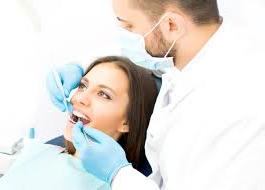oralhealth
What Is Tooth Whitening?

What Is It?
Tooth whitening lightens teeth and helps to eliminate stains and discoloration. As it may improve your teeth appear whitening is among the most popular cosmetic procedures. Most dentists do tooth whitening.
Whitening is not a one-time process. If you would like to keep a brighter color, it will have to be repeated from time to time.
What It Is Used For
The outer coating of your tooth is known as the enamel. The color of teeth will be generated by the reflection and scattering of light off the tooth, combined with the color of the dentin under it. Your genes have an effect on the thickness and smoothness of their enamel. Thinner enamel enables more of the color of their dentin. Having more challenging or smoother enamel also impacts the manifestation of the color and for that reason light.
Every day, a thin coating (pellicle) forms around the tooth and picks up stains. Tooth enamel contains pores that can hold stains.
The most common causes of teeth to get yellow or stained are:
Using tobacco
Ingesting calcium-rich fluids like coffee, cola, tea, and red wine
Not taking good care of your own teeth
Aging makes teeth much less bright as the tooth gets thinner and the dentin gets darker.
It is also possible to have stains in the tooth. These are called intrinsic stains. While teeth are developing, As instance stains may be caused by exposure to fluoride for a kid. Other causes include tetracycline antibiotics. A kid's teeth can be stained by them if taken by a mother during the second half of pregnancy or with a child who is 8 years old or younger. Teeth are still growing during these years. Trauma may darken a tooth.
Tooth whitening is the most effective on the surface (extrinsic) stains).
Planning
Other dental problems might affect the success of teeth whitening. For instance, before teeth are white cavities need to be medicated. That's because the whitening alternative can pass through areas and attain the inner areas of the tooth. If your gums have receded, the roots of your teeth can appear discolored or yellow. Whitening products will not make them whiter.
Visit the Dental clinic in Mumbai for teeth whitening.
In case you have tooth decay or receding teeth, whitening may make your teeth more sensitive. Whitening also does not operate on ceramic or ceramic crowns or veneers.
Whitening could be done in the dental office or in your home. For in-office whitening, your dentist will picture your teeth. This measure will help her or him to track the improvement of the treatment. Your physician also will examine your teeth and ask you questions to find out what caused the staining.
Next, the dentist or a dental hygienist will clean your teeth. This will remove the film of germs, food and other substances that build up in your teeth and also contribute to the discoloration. The whitening process starts, once this is completed.
For whitening at home, your dentist can make trays hold the whitening gel which fit your teeth precisely. Home whitening gel generally needs to be applied every day for two to three weeks. Over-the-counter kits are available for home use. They provide trays to maintain the gel or even whitening strips that stick to your teeth. Speak to your dentist if you want to utilize these house products. Be sure to follow directions to avoid overuse and potential damage.
How It's Done
There are two chief types of whitening procedures. Crucial whitening is done on teeth that have nerves. Non-vital whitening is completed on a tooth that has been in the root canal therapy and no longer includes a nerve.
Vital Whitening
The most frequent kind of vital tooth whitening employs a gel that's applied directly to the tooth. This item contains some form of hydrogen peroxide.
Tooth whitening is performed in your dentist's office or in the home. Whitening enables your dentist to use a whitening gel that is effective. A technical light allows bleaching to occur also or laser triggers the gel.
In-office whitening usually takes 30 to 90 minutes. You will need 1 to 3 appointments. The amount depends upon the procedure used, just how white you want your teeth to become and how severe your stains are. Types of stains respond to the treatment.
Your dentist may apply a material that covers and protects your gums around the teeth. Afterward, the agent is going to be placed on the teeth.
Many whitening agents are activated by laser light, specific lights or from the heat from these lights. After the whitening agent is put on, the dentist will shine the light. If they're badly discolored, your dentist will suggest that you continue the bleaching process.
For teeth whitening, your dentist will take impressions of your upper and lower teeth also will create custom made mouthpieces to fit you. The mouthpiece should fit. A snug fit assists the agent to stay in contact with your teeth.
At home, you will fill every mouthpiece using a whitening gel your dentist supplies. You will use the mouthpiece for several hours every day. Lots of men and women achieve the quantity of whitening they need within two or a week. However, you may need to use the mouthpiece for longer or even 3 weeks.
You can also purchase whitening products on the countertop. They contain a whitening agent that is poorer than the products it's possible to get from the dentist. Whitening may take more. The agent is employed as a gel or as a strip that sticks to your teeth. Mouthpieces match rigorously. Whitening toothpaste can be found also. They contain abrasives that remove stains.
Location: Sabkadentist
